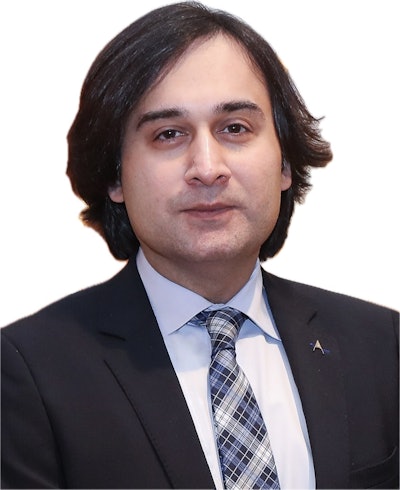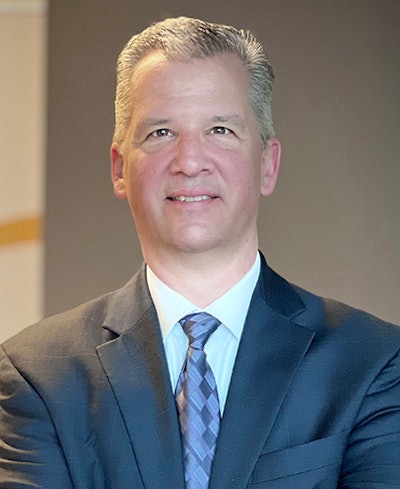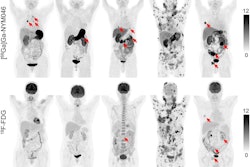While academic medical center radiology departments are expanding significantly and hospitals are adapting to health system consolidation trends, demand for innovative imaging informatics remains strong among operations and physician teams.
Scale has become an indomitable driver for most hospitals and health systems, and with that scale comes a substantial increase in operational complexity. A bold strategic vision may involve and, importantly, require a better understanding of the new capabilities of Enterprise Imaging (EI).
With strong demand for medical imaging in many differing clinical contexts, hospitals are managing growing routine imaging demands while balancing teaching practices, ambulatory services, primary care, and subspecialty services.
A few examples include a new clinical learning center project called "Project Health" in Nebraska1 that will culminate into an ultramodern $2.19 billion healthcare facility. Another, a new hospital complex is underway at University of Utah Health.2 El Paso, Texas, is also in line for a transformational project and comprehensive cancer center for University Medical Center of El Paso that will support a partnership with Texas Tech University Health Sciences El Paso.3
Hospital and health system leaders who want to ensure value and efficiency in imaging orders and clinical collaboration are also likely to be looking for ways to preserve the time of their radiologists and care teams -- to devote more time to complex cases. These are just two of the sensitive issues facing healthcare executives who manage unique and complex infrastructures.
When management consultants McKinsey & Company surveyed leaders of academic medical centers, they identified patient length of stay and revenue cycle management as top performance priorities among the 20 areas surveyed.4 Balancing clinical and business imperatives, leaders also highlighted physician productivity as the second-largest area of untapped margin improvement after length of stay. Radiologists play a crucial role in this dynamic by delivering accurate diagnostics that guide physicians toward the most effective treatments.
Universal access, enhanced collaboration, and workflow orchestration are key considerations for improving hospital and health system performance, particularly for the professional and technical services provided by physicians and care teams.
"Our luminary customers have enabled multiple imaging service lines, helping to achieve hundreds of saved work hours on a single platform," AGFA HealthCare Chief Medical Officer Dr. Anjum Ahmed explained in an interview with AuntMinnie.com. “Unifying multiple imaging repositories and being able to communicate collaboratively across several campus departments ranks as a top priority for Enterprise Imaging customers.
"When AGFA HealthCare began its transition from traditional PACS to a comprehensive Enterprise Imaging Platform, the objective was to broaden access to clinical imaging data across multiple departments -- not just radiology and cardiology, but also other imaging service lines like dermatology, ophthalmology, dental, oncology, nuclear medicine, ob/gyn and others,” Ahmed explained.
This shift enabled the centralization of all imaging health records, making them more accessible and significantly reducing the time required to retrieve and review information, ultimately streamlining care delivery, Ahmed said.
Beyond and above, clinicians are increasingly showing interest in AI-driven automation and determining how it could help them. However, the wide range of options available to AI-savvy physicians, imaging center administrators, and hospital department leaders can be overwhelming, noted Ahmed.
-ologies in one pane
"AGFA HealthCare’s Enterprise Imaging (EI) Platform truly sets the standard, bringing together a digital ecosystem that delivers the expertise, insight, and innovation necessary to create a comprehensive solution," Ahmed explained. "Now cloud-enabled as well, it covers the entire patient journey from start to finish -- leveraging our vendor-neutral archive (VNA) capabilities and the power of its Universal Viewer, which enhances the visual experience of clinical users."
 Dr. Anjum Ahmed.
Dr. Anjum Ahmed.
"When teams use EI -- radiologists and other imaging experts join multidisciplinary team meetings (MDTs) or tumor board discussions -- they have seamless access to the tools, datasets, and visual intelligence needed to support meaningful dialogue,” Ahmed explained. “In these multidisciplinary settings, a unified platform is essential -- one that doesn’t require switching between specialized tools for each department. Our customers are experiencing an integrated, standards-based ecosystem that fully supports collaborative clinical workflows across specialties.”
However, according to Ahmed, three common questions arise about comprehensive Enterprise Imaging implementation:
- How are we going to manage the data (data acquisition and image backup)?
- How are we going to view the images (that allows access to multispecialty clinicians and diagnosticians)?
- How do we exchange all imaging data and generate reports?
“Governance is our core expertise,” Ahmed emphasized, speaking consultatively. “Establishing strong governance and bringing together multispecialty teams -- from clinicians to IT, as well as testing and validation groups -- is critical. This collaboration ensures everyone understands what needs to be evaluated and verified thoroughly before going live -- therefore setting the foundation for a successful rollout.”
Introducing AI
“AI is here, and the utilization of AI algorithms in a safe and ethical manner is a key discussion among our luminary sites. When you introduce an algorithm into a clinical or research environment,” Ahmed explained, “there are certain outputs that need to be incorporated and handled carefully; AI could end up being a black box generating metadata.” For this reason, Ahmed recommends AGFA HealthCare's strategic integration approach for AI applications, which is based on clinical care pathways.
Ahmed explained how AGFA HealthCare’s vision for AI led to the development of the RUBEE strategy, which enables the handling of AI algorithm-based metadata and orchestrating workflows for the EI users. It represents the culmination of the company's decade-long focus and anticipation of clinical-grade AI reaching maturity.
RUBEE acts at the center of a healthcare imaging health network, and works in five core ways:
- Smart worklists and triage. Worklists optimize the display of studies from multiple institutions and systems, including third-party PACS. “We developed intelligent worklists for a reason, because if your PACS or EI solution does not have the capability to ingest metadata from AI algorithms, those algorithms won't be able to enable automated triage or smart worklists,” Ahmed cautioned.
- Workflow orchestration. If a patient comes for a different clinical manifestation and AI picks up a relevant clinical finding that is not for your subspecialty, the system will orchestrate those cases of clinical interest to the relevant user, according to Ahmed.
- Predictive visualization. The AI findings are natively embedded into your clinical workspace -- eliminating the need to bring up multiple AI viewing applications. RUBEE enables users to select AI algorithms to meet their clinical needs. For example, in the breast imaging use case, the package enables multiple use cases for primary screening, symptomatic pathway, and breast density assessment as a single offering.
- Hanging protocol automation. "This is usually what radiologists want to see," Ahmed said. "AI can process results in the background, but displaying those results intuitively -- whether current versus priors or raw images versus AI-processed results -- and speedily, is what the radiologists expect from automated systems that integrate or embed AI."
- Meaningful reports. “With the advent of generative AI, there’s now the potential to enable report creation in a logical and contextual manner,” Ahmed said. "Today, many clinicians are aware of the pixel or imaging AI tools available. There are a number of additional data or reporting tools that are becoming more prevalent. These tools can easily combine pixel intelligence with the clinicians' results into a prepopulated report. “Ultimately our goals are to improve analysis of results, productivity, and improved confidence in their reports, which they have to sign for,” added Rob Mayer, chief product officer of AGFA HealthCare Enterprise Imaging.
“The EI platform is also designed to meet a facility’s strict data security requirements, providing robust protection for patient information and imaging data at every access point," Ahmed noted.
 Rob Mayer.
Rob Mayer.
"Every day we hear about cybersecurity events at healthcare facilities and hear from our customers about security threats they are dealing with," Mayer said. "We take a collaborative approach where we review our solution offerings and hear about technologies or solutions that customers use or need. We want to share and collaborate."
Mayer is a 30-year-plus veteran in the healthcare information technology (HIT), EI, and the medical device field.
"There's some very basic block and tackling that relates to product security, like making sure you have login and access controls as well as audit reports," Mayer said. "Then there are more complicated needs that require close collaboration to meet those requirements.
"As we've evolved our solution from an on-premises deployment model up to the cloud, the core product needs stay the same," Mayer continued. "However, depending on customers’ strategic goals, as well as internal resources and bandwidth, healthcare systems may want to offload certain responsibilities to the vendors and leverage their experience and managed services to enable security protections and system support."
While the aim in finding an enterprise imaging solution is likely to include unifying multiple imaging repositories across departments, expanding existing imaging and interpretation services offered internally, enabling teleradiology imaging, future expansion into digital pathology, and support for point-of-care clinical encounters-based imaging services will likely be considerations as well.
“Ultimately, the clinical needs of radiologists, to collaborate and complete their work, highlight the capabilities of our Enterprise Imaging Platform," Mayer said. "In turn, these will elevate the profile of radiologists across health networks.”
Visiting RSNA? Reach out to us for a discussion or demonstration with our team of experts: www.agfahealthcare.com/rsna24.
References:
- KOLN, "Regents approve next step for $2.19 billion health care facility at UNMC, Nebraska Medicine." https://www.1011now.com/2024/08/08/regents-approve-next-step-219-billion-health-care-facility-unmc-nebraska-medicine/. (Accessed November 12, 2024)
- St. Louis Tribune, "The U.’s West Valley Hospital project moving forward. So is its workforce program." https://www.sltrib.com/news/2024/04/07/us-west-valley-hospital-project/. (Accessed November 12, 2024)
- El Paso Matters, "Opinion: UMC bond issue will improve health care in El Paso." https://elpasomatters.org/2024/10/18/opinion-veronica-escobar-support-umc-el-paso-bond-issue/. (Accessed November 12, 2024)
- McKinsey & Company, "Ensuring the financial sustainability of academic medical centers." https://www.mckinsey.com/industries/healthcare/our-insights/ensuring-the-financial-sustainability-of-academic-medical-centers. (Accessed November 12, 2024)




















